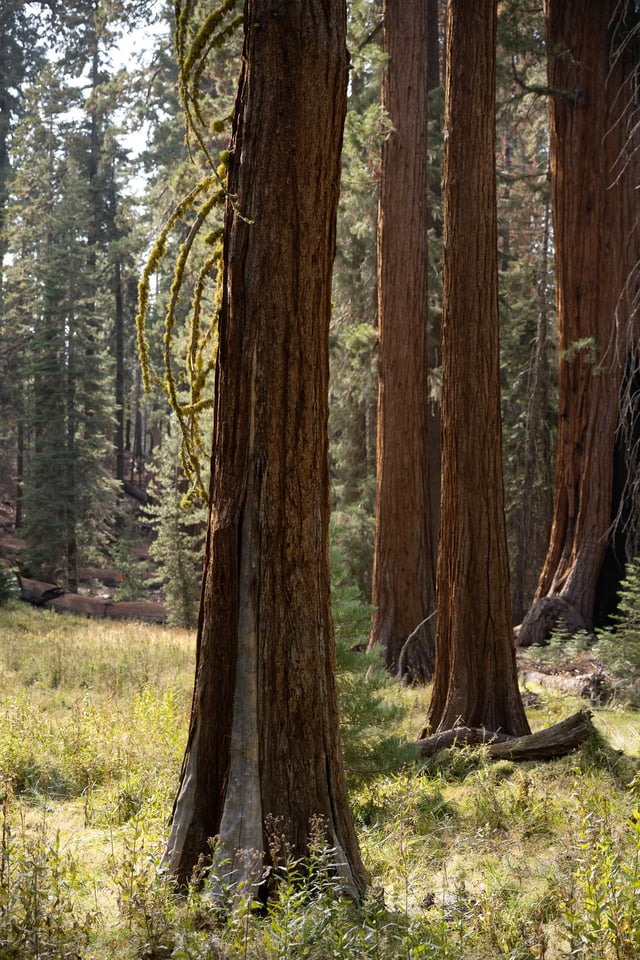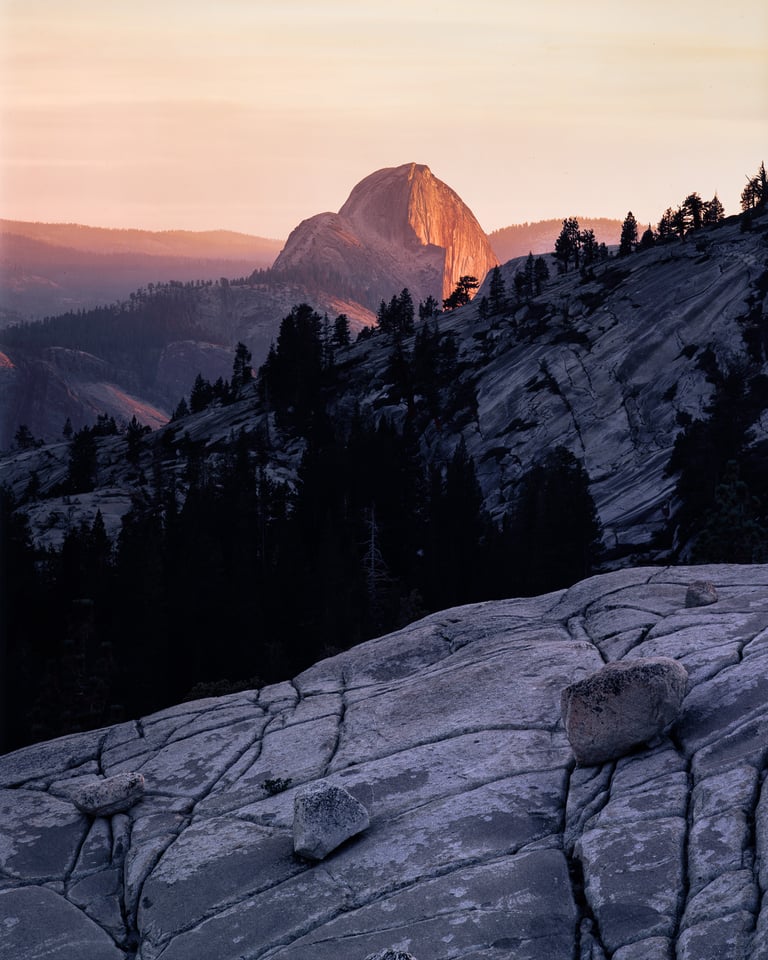There are two impossible questions I like to ask myself as landscape photographer. Although they’ll never have perfect answers, the closer I try to get, the more I see my photos improve. They are: “What makes a good landscape?” and “What makes a good landscape photo?”
I’ve already written many articles trying to answer these questions at a broad level at Photography Life. (For example, here’s an article on how to find beautiful landscapes, and another on what makes a good photo.) Today, though, I want to focus on a much smaller component of the answer instead – something I call “fractal beauty.”
Fractal beauty is the idea of beauty on many different levels. Like a branching tree or the crystals of a snowflake, fractally beautiful photos are interesting whether you look at the microscopic level or at the full picture.
To me, there are two ways to interpret the idea of fractal beauty. One relates to the landscape itself, which may have a multitude of interesting subjects both large and small; the other relates to the photo, which benefits from having interesting elements in every aspect of the composition.
Fractally Beautiful Landscapes
Let me return to the first unanswerable question: “What makes a good landscape?”
The closest thing I have to an answer could be summed up by the word variety. As a landscape photographer, I’m not really looking for places where there’s only one good photo to be taken – an obvious shot, even a beautiful one – if the rest of the landscape is uninspiring.
Sometimes, I’ll visit a popular, over-photographed location and feel like it’s a bit of a letdown in person. It’s not a letdown just because it’s famous or overcrowded (although that doesn’t help). Instead, the bigger problem is if there isn’t anything interesting beyond the one photo you always see. I greatly prefer a landscape which offers inspiration both big and small, in all directions. Fractal beauty.
Not all famous spots are letdowns. I will always love Yosemite National Park for landscape photography. Yes, it’s overcrowded, and the icons have been photographed millions of times from every conceivable angle. But what about the high country along Tioga Pass? Colorful trees reflected in the Merced River? Small details in the frost-covered grass in the morning? For me, Yosemite is the epitome of “fractal beauty” because it isn’t just about the big, iconic landscapes. Those are still beautiful, but so is every other level of the park.






I took all the photos above in Yosemite, and you can see how much inspiration it offers beyond the classic photos. That’s why the best places for landscape photography, at least as I see them, all have a component of fractal beauty. You could throw me in Yosemite with the assignment to only take abstract photos, and I doubt I would ever run out of inspiration. The same would be true if you told me to capture just towering mountains, just trees, just intimate landscapes, just waterfalls…
Not only does fractal beauty result in a greater variety of photos, but it also allows you to take photos that match your inspiration at a particular moment. For example, on my most recent trip to photograph Colorado’s fall color season, I felt inclined to focus on details and intimate landscapes much more than I had in the past, when the bigger landscapes had taken center stage. And the fractal beauty of the location made it possible.

How do you find landscapes that are beautiful at so many different levels? If you don’t already have a place in mind, I recommend starting with regional or national parks. Even – or especially – in the less “iconic” areas of a park, there are often beautiful pockets for landscape photography. Whether it’s a coincidence, or a law of nature beyond my understanding, beautiful places very often do have a fractal quality as well.
Another way to find these sorts of locations is simply to keep your eyes peeled. Don’t just pay attention to the biggest, most obvious landmarks around you – instead, look around. Quite often, just a little bit off the beaten path from the obvious subject, you’ll find a continuing thread of beauty around you. If you’re there to notice it, you can get some wonderful photographs.
Fractally Beautiful Photos
The other component of fractal beauty in landscape photography involves the photo itself. It goes back to that other question, “What makes a good landscape photo?”
I don’t have a perfect answer for you here, either, but one possible element is: The photo is interesting in every part of the composition! Nothing feels like it takes away from the image. Instead, every part of the photo contributes to your story, or to your emotional message.
This isn’t to say that the entire photo needs to be full of different subjects – there absolutely can be empty areas or places that draw less attention. It’s simply that those areas are still interesting and contribute to the photo in some way, rather than taking away from it.

That said, fractally beautiful photos often do have interesting elements in many different areas of the frame, and they reward viewers for looking at them for longer. I’m always trying to take landscape photos that can be cropped any possible way and still show something worth looking at. Not that I ever succeed exactly, but it’s a goal to chase after, and my favorite images usually accomplish it to some small degree.



Conclusion
Landscape photographers often try to chase after beauty, from the places they visit to the photos they take. I think you can take this approach further by thinking of the idea of fractal beauty. Search for locations with inspiring subjects of all different types, not just the obvious, grand view. And when you compose your photos, don’t just think in terms of the main subject – instead, pay attention to every part of the composition and ask yourself if it contributes to the whole.

Thank you, Spencer. This article is an eye opener (no pun). Now I understand why I am so taken with so many of your images. And how I can look for these multiple pieces & layers of interest in almost anything in my photography too.
Intimate Landsapes was, to me, a useful idea, one that described the sort of images I’ve been drawn to over the last year or so – infinitely better than constantly apologising for producing “not quite macro” shots.
Fractal beauty could be another, although I don’t agree that the repetition of beautiful elements will necessarily result in a beautiful image. In point of fact, if you were to spend time discussing the distinction between a beautiful view and a beautiful image I suspect you’d be doing a lot of us a big favour…
Best wishes for the New Year!
I think the keyword here that must be emphasized in your reply is “necessarily”. Fractal beauty may be a kind of style of expression and way of organizing perception that helps communicate ideas — but like all stylistic meanderings, necessarily implying anything is outside the purview of artistic exploration. There must be that final element of cohesion and personality that separates the mechanical from the indescribable.
Fractal beauty is often a hidden beauty (although 100% visible, but somehow undiscovered).
Fractal beauty can be sometimes very, very small, however light must strongly co-operate.
I mostly photograph fractal beauty of Warsaw streets.
That sounds like a very cool project. When you say it can sometimes be very small, I agree, I think that’s the essence of this “fractal beauty” idea. You’ve probably gotten some good photos of Warsaw that are close-ups, or maybe even macro photos, that reveal something interesting about the city. And yet because of some shared aesthetic thread across scales (or self-similarity as Alfonso put it below), I bet they don’t feel out of place if displayed next to a more typical, wider photo of Warsaw.
One thing I really like about the work of all of you here at PL is that you provide both the technical nitty-gritty required to properly evaluate photographic equipment AND the more conceptual, sometimes philosophical essays about photography. Keep it up!
Thank you, I’m glad to hear it!
I’m not sure I would call it fractal beauty, but on the other hand I can’t think of a word or phrase that you could use that would be better. Fractal sounds a little too like fractured. Complex scene, maybe? I’m stumped. I really loved the picture of the grasses hanging over water. That is exactly the kind of photo I love to take. It speaks to me. I also loved the waterfall and rocks, though I’d prefer to see the water in its natural beauty – unblurred. As always, your pictures are a pleasure to view.
“Beauty across scales” – not very elegant. “Fractal beauty” is inspired by the mathematical phenomenon: Beauty at larger scale emerges from the repetition of smaller-scale elements that are themselves beautiful. Even though someone else below disagrees (and I can understand why), Spencer’s terminology is an interesting way to express the concept.
I really like the way you put it – “Beauty at larger scale emerges from the repetition of smaller-scale elements that are themselves beautiful.” That’s exactly what I’m trying to get at. I think it’s true both for the best landscapes and for the best photos.
Thank you, Elaine! I’m glad you like those photos. I’m not always going to shoot water at fast shutter speeds, it depends to me on how the water felt in person. Distant waterfalls look more hazy and less like droplets to me. But in general I agree with you that the silky, blurry water trend isn’t representative of how most waterfalls feel to me.
The essence of what I’m trying to get at with the word fractal is that there is a branching sense of beauty in some landscapes that is present at all scales, like the branches of a snowflake (and that the same can be said of some of the best photos). I think it would be an interesting project to take a series of photos from grand to microscopic at a place like Yosemite to show what I mean, that there is a similar and shared thread of beauty no matter how close or far you look.
Nice landscapes, but a horrible misuse of the word ‘fractal’ the essence of which is self-similarity, not merely layers or complexity or variety in a photograph.
Thanks for your feedback, Alfonso! I really do mean fractal here, but I’m not using it literally – I know that landscapes themselves aren’t actually fractal. Which is why I’m not searching for “fractal landscapes” but “fractal beauty” in landscapes, so, there *is* self-similarity. It is self-similarity in the beauty of the landscape at all scales, not in the literal appearance of the landscape. Maybe there still would be a better word to use than fractal, but as a metaphor, I think it is the term that best captures the phenomenon I’m trying to describe.
Speaking as a mathematician, I don’t think fractal is a bad use here. In fact, mathematicians themselves frequently overload terms when they are reminiscent of other terms.
This, with your intimate landscapes article, provides some interesting new ways to look at landscapes for me. I never thought about looking at images fractally, which seems to me subtly different than merely paying attention to the individual components in a composition. It’s something I want to try more of when looking at landscapes for sure. Great ideas!
Thank you, Jason! Right, it’s not just about composing the individual subjects. I like to think of the behavior of why the larger landscape is beautiful, thanks to the smaller details having that thread of beauty.